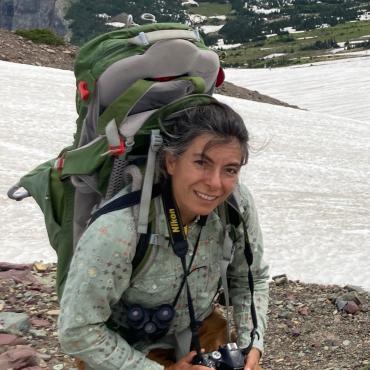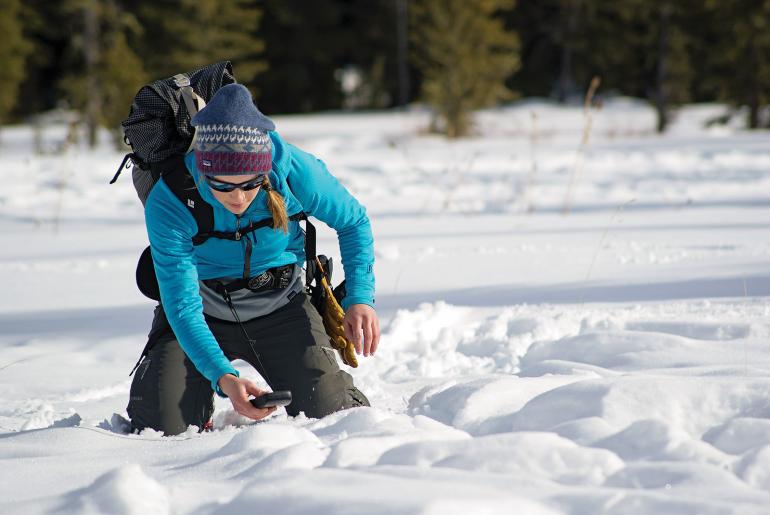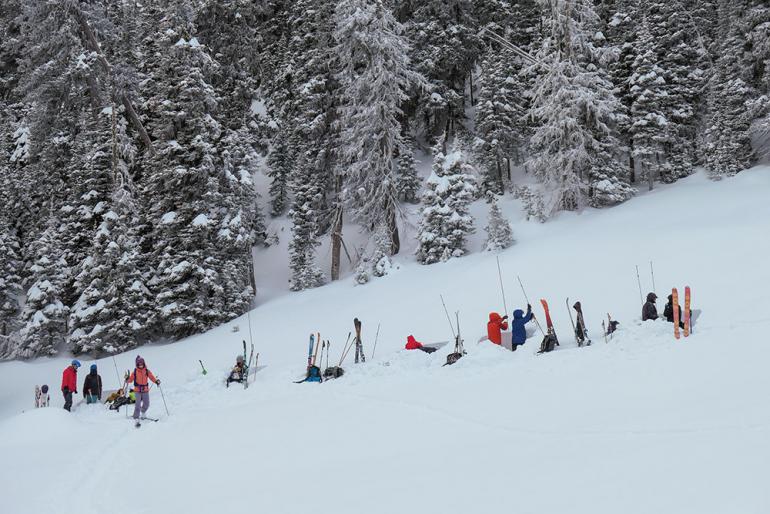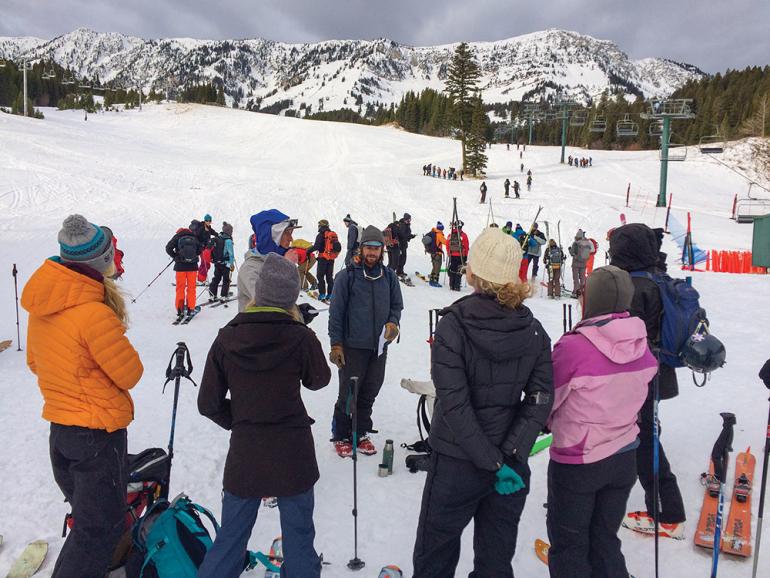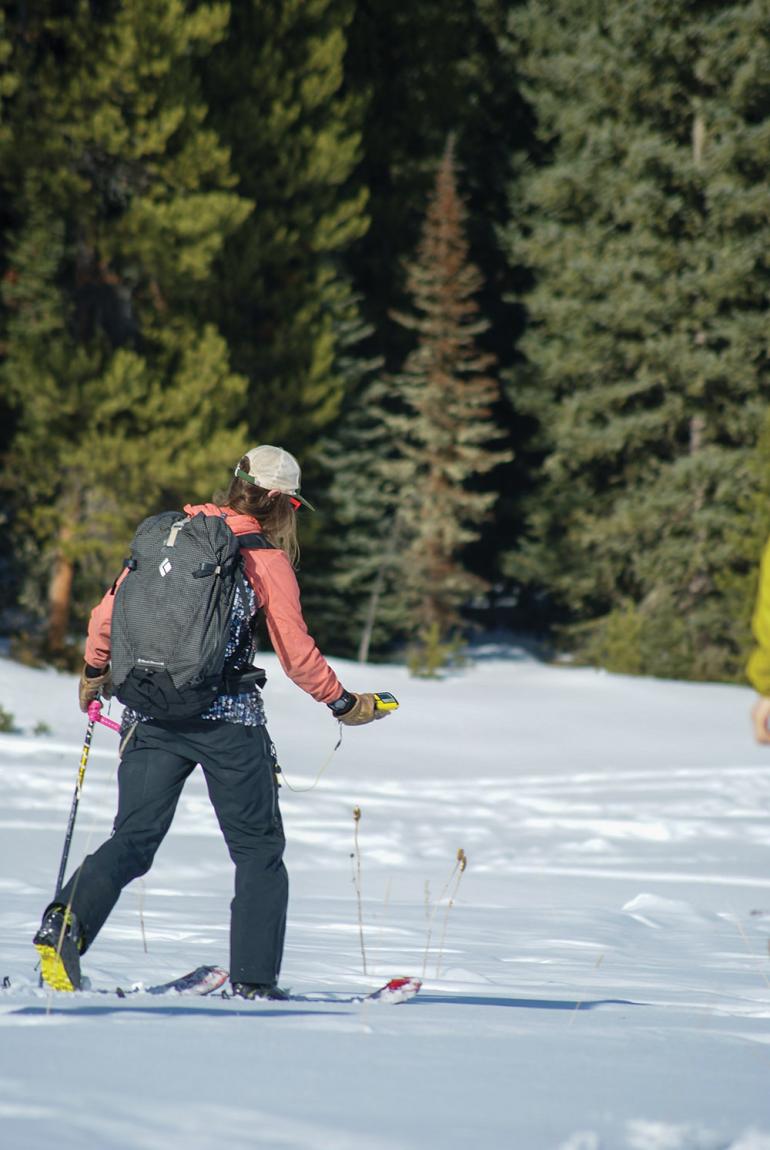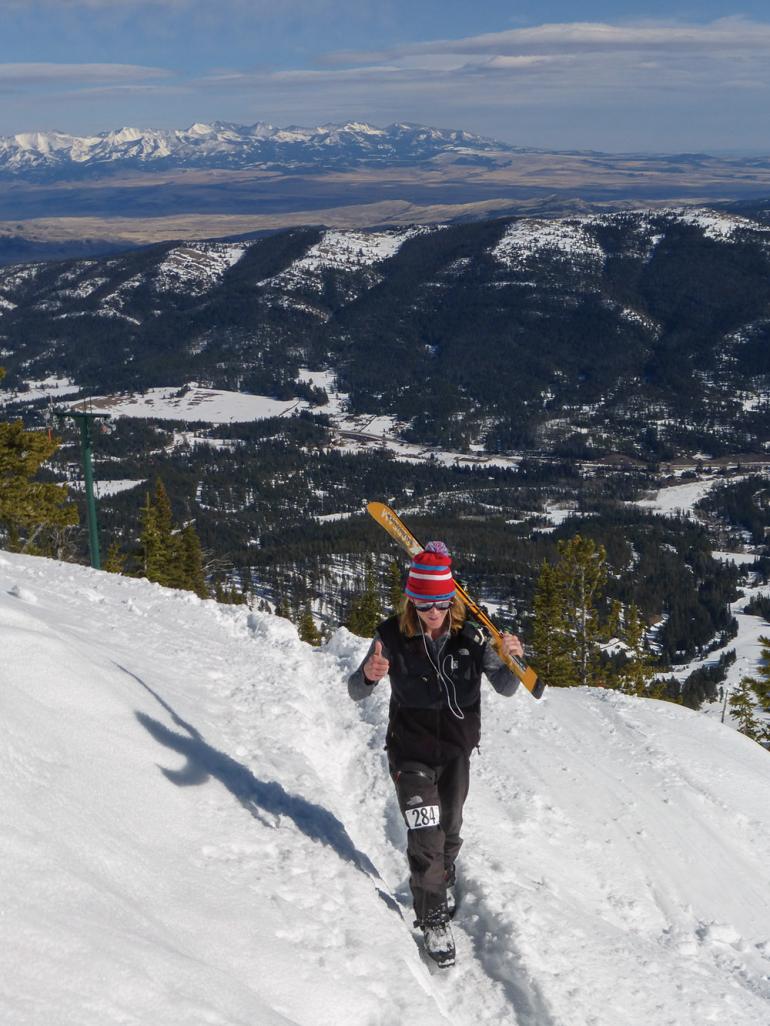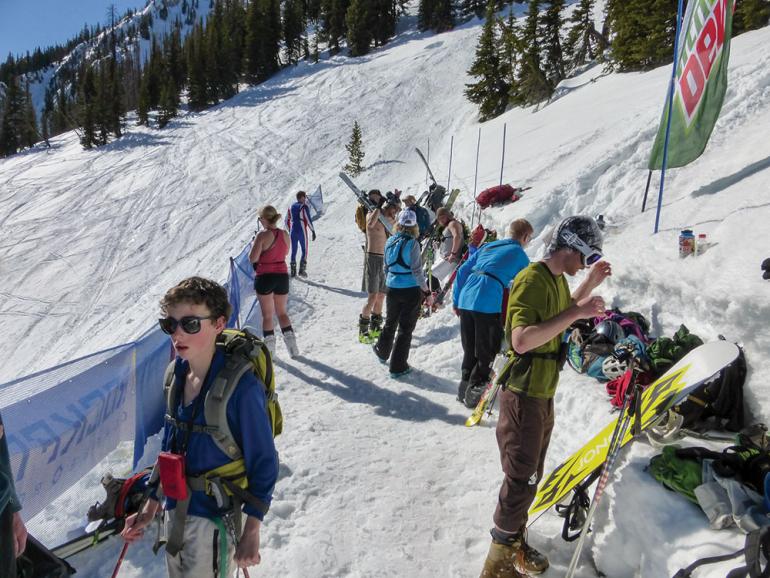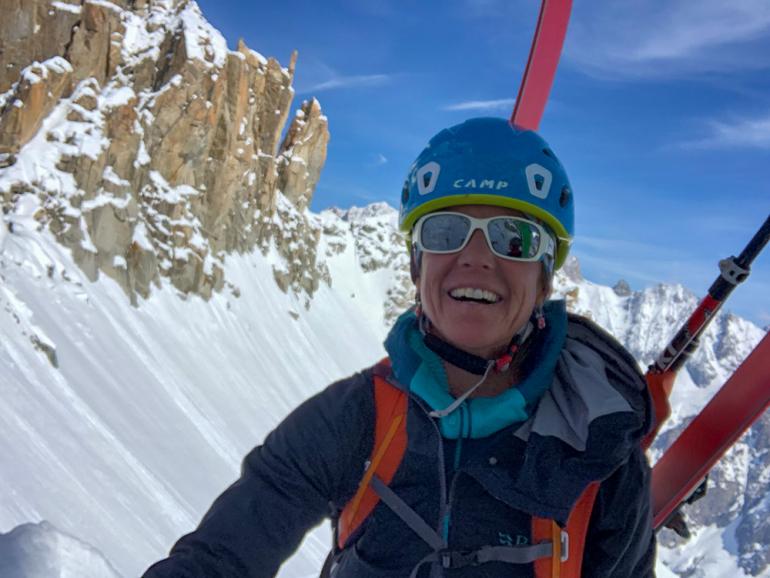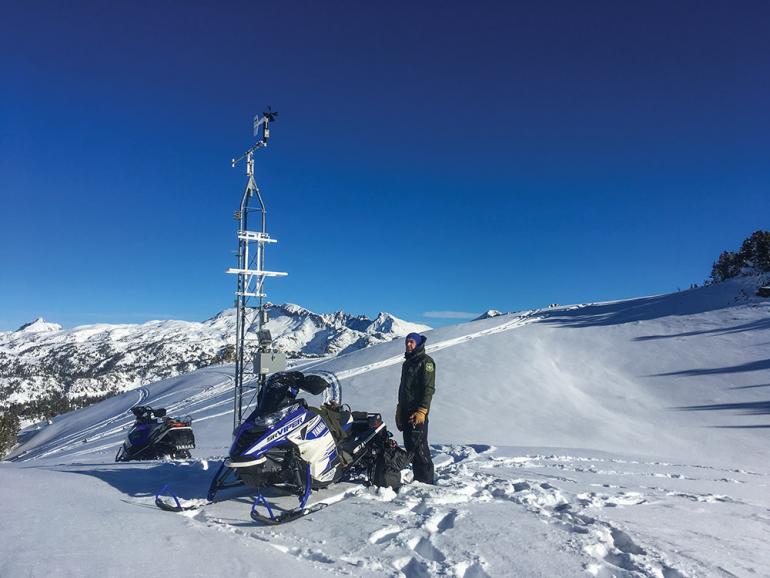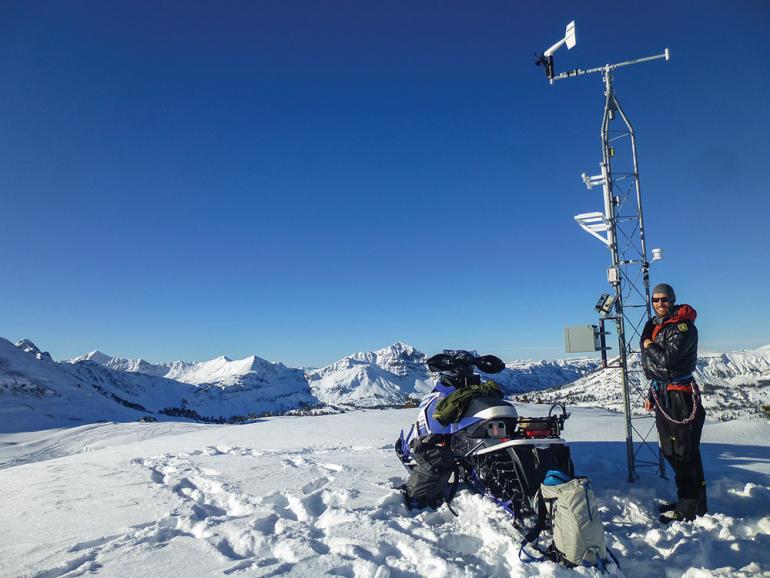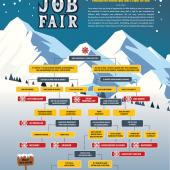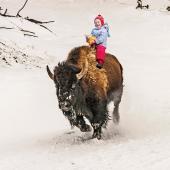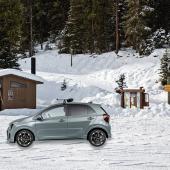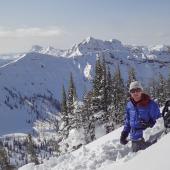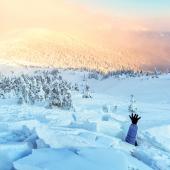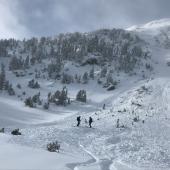A Friend in Need
Hometown Heroes, part one.
A safe snow season started with a screen tap for southwest Montanans eager to track the backcountry conditions. On October 7, the Gallatin National Forest Avalanche Center (GNFAC) pinged an Instagram post straight into the palms of followers, forecasting high-elevation snow and announcing forthcoming avalanche classes funded and coordinated by the center’s nonprofit partner, the Friends of the GNFAC.
Avalanche education and awareness have always been the focal point of the Friends. In 1992, a budding GNFAC, just two years old, sought more money, manpower, and equipment to issue effective avalanche forecasts covering 1,720 square miles to a growing number of backcountry users. The Friends were born to dive deeper into resources inaccessible by the GNFAC, a government agency run by the National Forest Service.
Fast forward almost 30 years and today’s Friends contribute $100,000 annually to fund over 30 percent of GNFAC’s operating costs, mostly through fundraisers like the Powder Blast. With a volunteer board of nine, headed by Jeannie Wall—a member since the late 1990s and president since 2006—the Friends stand tall on their robust education program of free classes to offer the bells, whistles, and lights of backcountry safety. The tagline “Are you flashing?” beckons users to test beacons at nine trailheads across GNFAC territory, while buried beacons at four training parks transmit signals for search-and-probe rescue practice—all funded and installed by the Friends and their partners.
While GNFAC forecasters are the visible forefront of avalanche advisories—we bow in thanks—the Friends own the center’s website and control their social media, including Instagram, Facebook, YouTube, and Twitter. The Friends supply and maintain five remote weather stations and fund SnowPilot, open-source software allowing users to graph and access snowpit records. They partner with community clubs and videographers. They procure and maintain snowmobiles, radios, and equipment, enabling forecasters to traverse terrain, mine weather particulars, then winnow details to produce meaningful, accessible content that could spur adventure, or save a life.
In 2020, the Friends helped fund a fourth forecaster. This fortified a full-time GNFAC staff roster with the flexibility to pursue more detailed data on snow stability, weather, and avalanche danger across deeper terrain. If you’ve thumb-swiped a GNFAC video of your favorite forecaster kneeling on surface hoar, carving out a snowpit; if you’ve read reports of unstable slabs in Beehive Basin, natural avalanches up Buck Ridge, and wicked winds on Flanders Mountain; if you’ve binged on avalanche footage; if you’ve dialed, tapped, clicked, subscribed, or obsessively checked your feed for the daily avalanche forecast, then you’re safer in the backcountry. Thanks in large part to the Friends.
The ballooning backcountry community has never had so much data. But there are always next steps. The Friends of the GNFAC are already exploring new ways to expand outreach.
“The Friends do things we can’t do,” says Doug Chabot, founding Friends board member turned forecaster and GNFAC director running 21 years. Chabot works closely alongside Jeannie Wall in a longstanding alliance of leadership defined by open conversation, constantly refreshed by a rotation of enthusiastic board members. “Everyone has a role,” says Wall. “It feels like one unit. The synergy is what is important.”
Equally important—and unique—is the commitment to an all-volunteer operation. While other Friends groups siphon money to pay a director, the Friends of the GNFAC reject salaried positions to meet demand for outreach and support head-on.
Early success came with their education program. GNFAC has long prided itself on saying yes to all requests for avalanche classes. But when increasing demand forced them to the brink of saying no in 2003, the Friends funded their first education coordinator. By 2019, two education coordinators, and over 40 instructors, offered avalanche awareness to 4,240 participants in 125 classes, with specific outreach targeting snowmobilers and youth. Though the Friends moved education online in 2020 with expanded offerings, their funding channel remains anchored in community. Every penny that pays education staff runs a straight shot through the Friends from the pockets of the recreating public.
That public fuels the Powder Blast, the Friends’ signature fundraising event and Bozeman’s biggest winter kick-off party. The excuse to gussy up, gather close, then eat, drink, dance, bid, and win prizes through auction and raffle ensures a safer snow season before the snow really flies. “It’s a direct deposit on your safety,” says Wall of the affair that raises 80 percent of Friends’ dollars by drawing preliminary sponsor contributions toward a goal of at least $60,000. When the lights come on at the ball, Wall turns to her community and says, “Just match this.”
Forced to go remote in 2020, Powder Blast exceeded expectations, raising more than $80,000. This year’s repeat GoFundMe version launched on October 12 and runs through mid-December. Wall has high hopes—beacon checkers at Fairy Lake, another weather station at Fir Ridge, and expanded education—while lamenting the lost intimacy of the in-person reunion. She admits, “We miss the gathering.”
Aided by benefits like King & Queen of the Ridge and Give Big Gallatin Valley, the Friends’ efforts are paying dividends across the map as user populations morph and pressures evolve. In Cooke City, the increasing amount of visiting snowmobilers and high numbers of motorized avalanche fatalities prompted a training program with an in-person Friends’ staff every weekend, weekly updates, and increased snowmobile presence through Friends’ support. Chabot praises the result. "We know our education efforts work," he says. "We're teaching more motorized courses to respond to need. There's also a growing interest in companion courses and women's-only courses. As people ask, we change with the changing times."
Outside Bridger Bowl boundaries, where wind shears crystal dust off Saddle Peak, legions of college-goers with lift passes drawn to Bozeman’s lift-accessed backcountry have never met a deep slab on a weak layer. The Friends have expanded education to target them, and their families, about avalanche danger outside the ropes.
The ballooning backcountry community has never had so much data. But there are always next steps. The Friends are already exploring new ways to expand outreach. As backcountry’s safety keystone, they distribute lifelines between experts with their information arsenal and a generous community of growing enthusiasts who crave broader access to expanded knowledge. Passion runs deep through their mission for stable support. And in the backcountry, stability is everything.
For more Hometown Heroes, read part two and part three.

